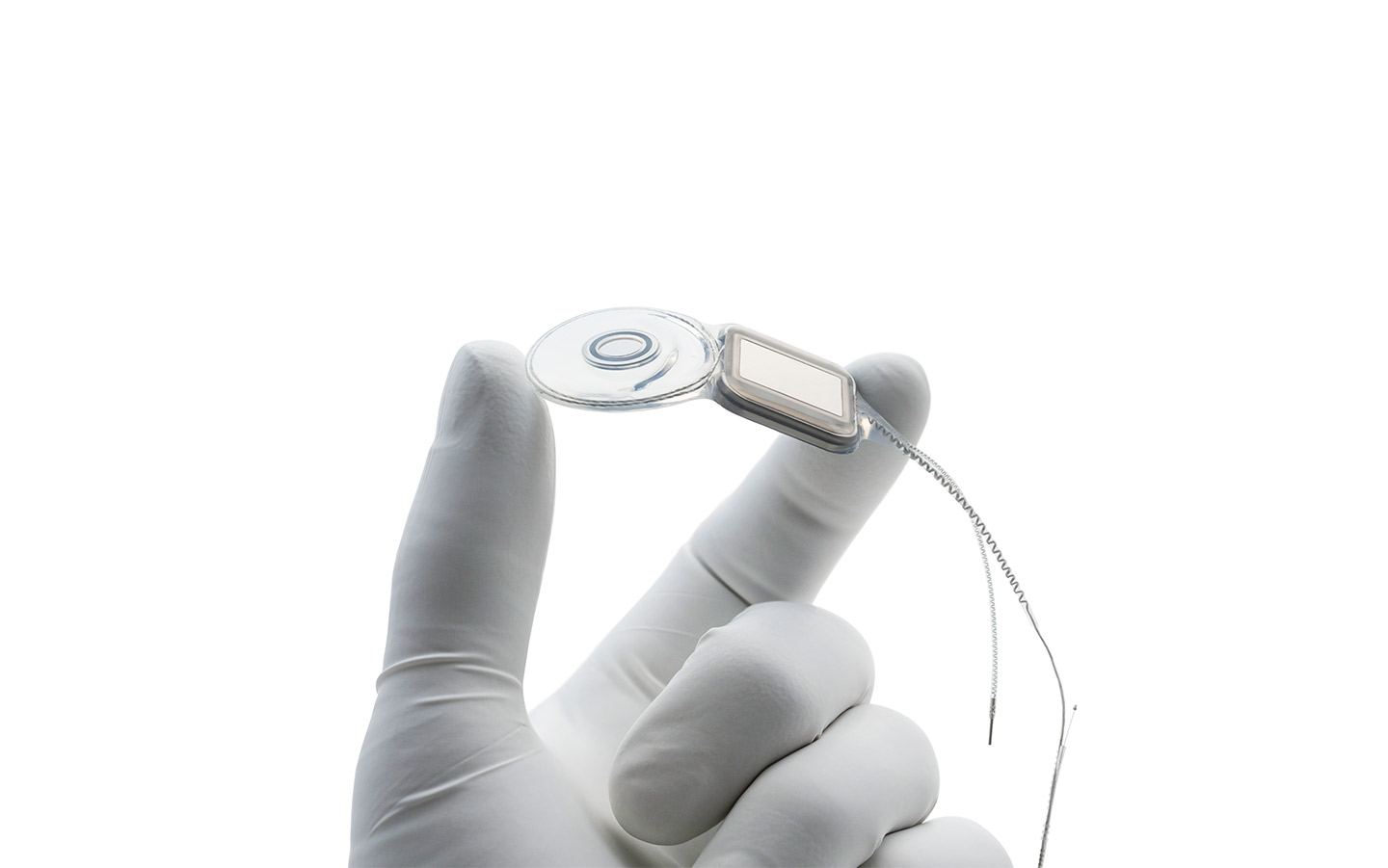Nucleus® implants
Cochlear has a range of implants and electrodes for different types of hearing loss and cochlear anatomy. Discover what sets Nucleus® implants apart.

What you'll find on this page
- How we design Cochlear™ Nucleus® implants.
- The Cochlear Nucleus implant portfolio.
- The link between electrode design and hearing performance.
Cochlear's implant design philosophy
- Designed for reliability1
- Designed for a high-quality hearing performance
- Intended to allow a close fit to your particular ear anatomy
- Prepared for supporting advances in sound processor technology
World's thinnest2 cochlear implants
The Nucleus® Profile™ and Profile Plus Series implants are the thinnest in the world.2
They are designed with a flexible coil to help conform to the natural curvature of your head.
Both Profile Plus and Profile Series Implants also have a high impact resistance — up to 2.5 joules — which meets the European standards for impact testing.3
Designed for hearing performance
The anatomy of the cochlea varies from person to person. That's why we offer a range of electrode shapes and lengths. Your surgeon will decide which one is best for you.
Unique features of Cochlear's electrodes and implants include:
-
22 active contacts.
-
Thinnest electrode.4
-
Electrodes which sit closest to the hearing nerve for your best hearing performance.5,6
-
Best long-term implant reliability record in the industry.*7

Disclaimer
Please seek advice from your health professional about treatments for hearing loss. Outcomes may vary, and your health professional will advise you about the factors which could affect your outcome. Always read the instructions for use. Not all products are available in all countries. Please contact your local Cochlear representative for product information.
For a full list of Cochlear’s trademarks, please visit our Terms of Use page.
* Based on latest generation of cochlear implants manufactured by Cochlear, Advanced Bionics, Oticon Medical available as at 31 December 2019.
References
- D1593476 Cochlear Nucleus Implant Reliability Report, Volume 17 December 2018
- D1655096 Competitor comparison of rec/stim thickness
- Clause 23.8 of EN 45502-2-3:2010
- FUN1142, https://www.medel.com/maestro-eas-electrodes, https://advancedbionics.com/us/en/home/products/ci-internal-components.html, https://www.oticonmedical.com/for-professionals/cochlear-implant/clinical-results/soft-surgery-with-evo-electrode-array-preserves-residual-hearing
- Holden LK, Finley CC, Firszt JB, Holden TA, Brenner C, Potts LG, et al. Factors affecting open-set word recognition in adults with cochlear implants. Ear Hear.2013 May-Jun;34(3):342-60.
- Esquia (2013): Esquia Medina, GN., Borel, S., Nguyen, Y., Ambert-Dahan, E., Ferrary, E., Sterkers, O., Bozorg Grayeli, A. Is Electrode-Modiolus Distance a Prognostic Factor for Hearing Performances after Cochlear Implant Surgery. Audiol Neurotol. 2013;18:406-413. DOI: 10.1159/000354115.
- Cochlear Limited, 454378. Comparison of reliability of cochlear implants commercially available (as at 31 December 2017). Data on file. Based on latest generation of cochlear implants manufactured by Cochlear, Advanced Bionics, Oticon Medical, and MED-EL available as at 31 December 2017.






